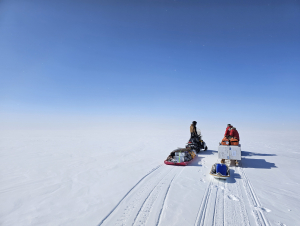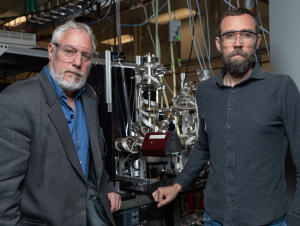To request a media interview, please reach out to experts using the faculty directories for each of our six schools, or contact Jess Hunt-Ralston, College of Sciences communications director. A list of faculty experts is also available to journalists upon request.
Latest News
School of Earth and Atmospheric Sciences researchers find dangerous sulfates are formed, and their particles get bigger, within the plumes of pollution belching from coal-fired power plants.
Physics Professor Nepomuk Otte and students have developed the Trinity Demonstrator to search for sources of high-energy neutrinos that contain clues to the early universe.
The advent of whole genome sequencing technology has prompted an explosion in research into how genetics are associated with disease risk. But the vast majority of genetics research has been done on people of European ancestry, and genetics researchers have realized that in order to address health disparities, more needs to be done.
The senior director of the Georgia Tech Center for Mental Health Care and Resources gives tips for managing end-of-year stress.
Rachel Moore is an expert at collecting data in difficult research environments, traveling to some of the most extreme places on Earth to research microbes and better understand astrobiology. This summer, she traveled to Greenland to collect ice cores, spending nearly 50 days on top of the Greenland Ice Sheet. The research could improve climate change predictions, while also helping astrobiologists better search for signs of life on icy worlds.
New Nature Astronomy research by Thom Orlando and Brant Jones shows electrons from Earth may contribute to the formation of water on the Moon’s surface. The work may impact our understanding of how water — a critical resource for life and sustained future human missions to the Moon — formed and continues to evolve on the lunar surface.








